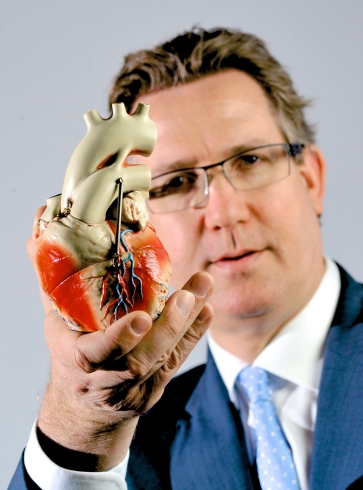A NEW study ranking Brimbank as one of Melbourne’s heart attack hot spots has increased pressure on the council and state government to step up health and prevention programs.
Heart Foundation data reveals that residents in lower socio-economic areas were at the highest risk of heart attack.
Residents in Brimbank were 1.2 times more likely than the rest of Victoria to be hospitalised due to heart attack. There were six heart attacks for every 10,000 people in Brimbank between 2007-08 and 2011-12, compared to two in the City of Melbourne and three each in Yarra and Port Phillip.
Heart Foundation spokeswoman Kellie-Ann Jolly said there was a strong link between risk factors for heart disease and socio-economic disadvantage.
“Some of the issues are around low income levels and the capacity to be physically active, and to be able to afford healthier options of food. We don’t always see the healthier choice as the easier to access or afford, and we know there are higher numbers of fast-food outlets in lower socio-economic areas.”
Ms Jolly said commuters in outer suburbs were often forced to drive to and from work due to poor public transport, which could also contribute to heart disease. “The further you go away from the centre of Melbourne, the less physical activity you’re doing each day, and we see that with overweight and obesity rates.”
A state government inquiry last year into the impacts of urban design on health found population growth in outer suburbs was outstripping basic infrastructure such as public transport, parks and medical services, creating “obesogenic” environments that promoted weight gain.
Ms Jolly said better planning was needed from state and local governments to ensure the right mix of services for outer-suburban residents.
Western Health director of cardiology Nicholas Cox said Sunshine and Footscray hospitals treated among the highest number of heart attack patients in the state.
“While there has really been a decrease in inner-city presentations of heart attack patients, there continues to be an increase in the western suburbs. We are also seeing an evolving demographic of patients with cardiovascular disease, with Indian and Sri Lankan migrants increasing the demand for services,” Dr Cox said.
Western Health was working with the government to expand cardiovascular services at Sunshine Hospital.
For Professor Robert Whitbourn, a cardiologist based at Wyndham Private, the west’s high rate of heart disease came as no surprise.
“It could be the high rate of smoking, the high rate of ethnicity and people from various backgrounds who may not have access to education about medical services, and the lack of attention to risk factors like blood pressure, diabetes and obesity.”







